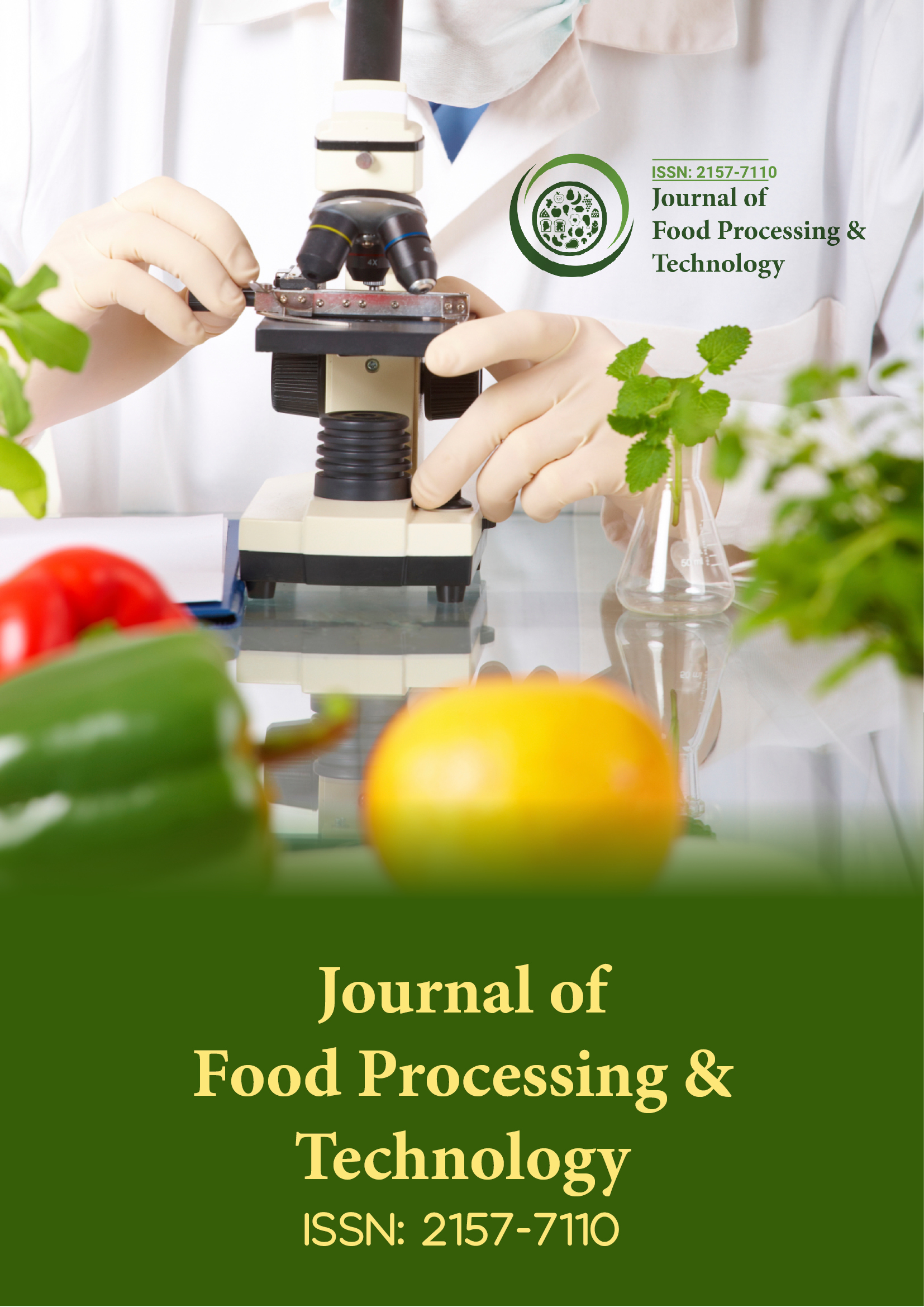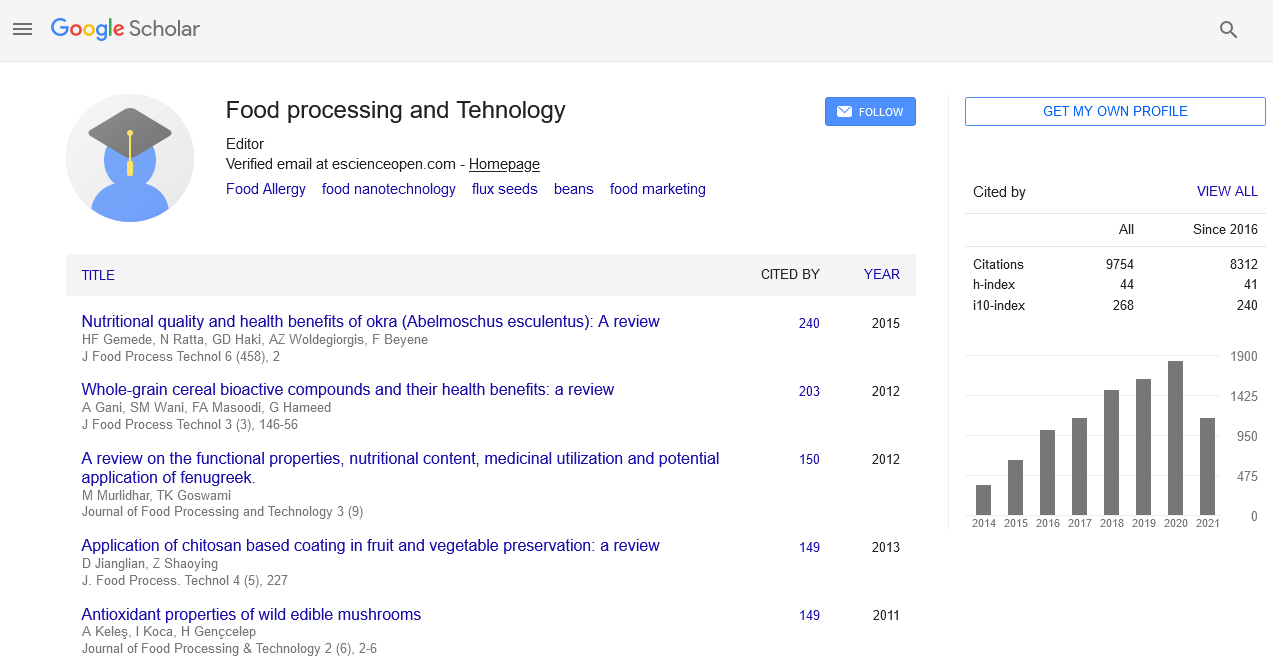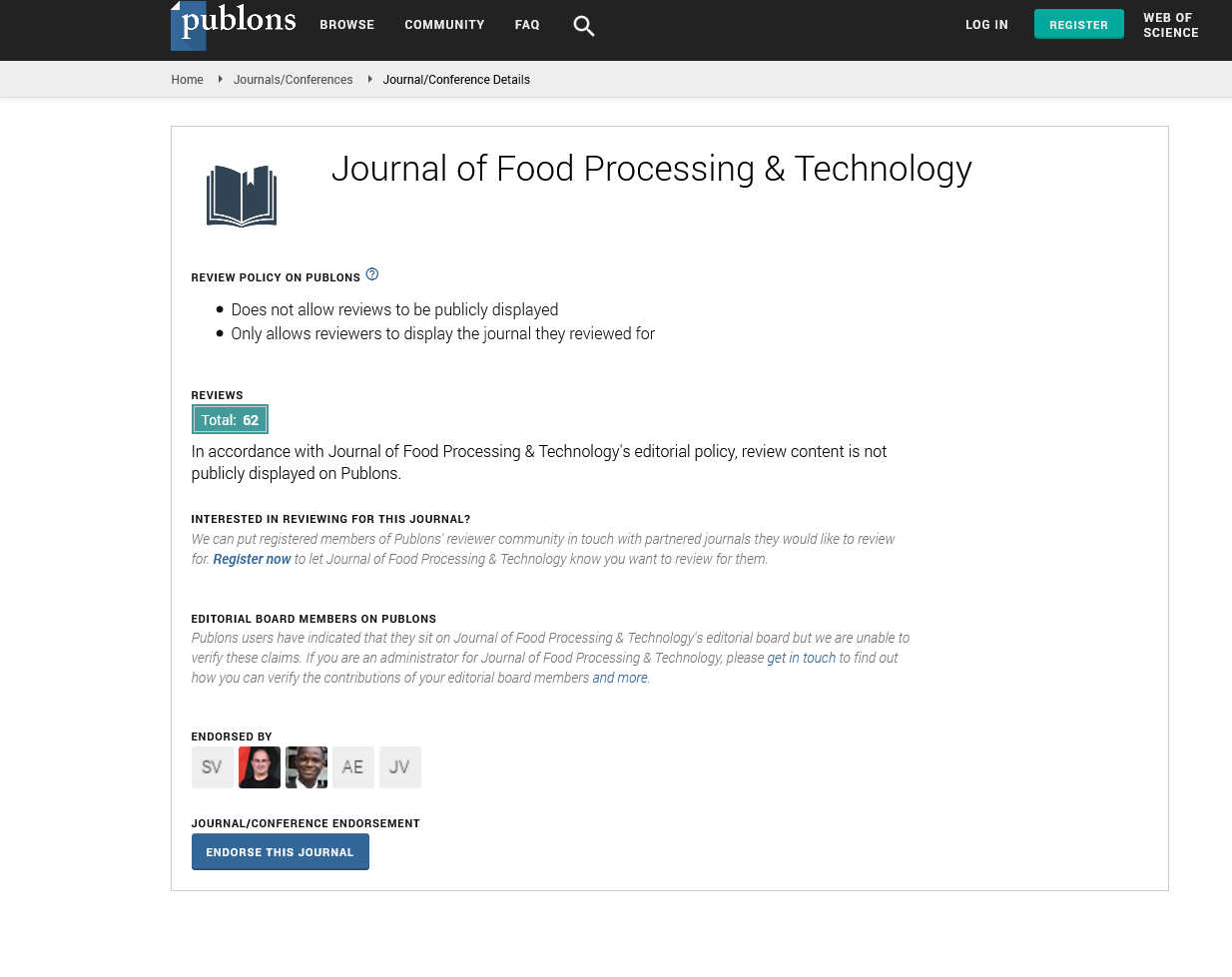Indexed In
- Genamics JournalSeek
- Academic Keys
- JournalTOCs
- China National Knowledge Infrastructure (CNKI)
- Access to Global Online Research in Agriculture (AGORA)
- Centre for Agriculture and Biosciences International (CABI)
- RefSeek
- Directory of Research Journal Indexing (DRJI)
- Hamdard University
- EBSCO A-Z
- OCLC- WorldCat
- Scholarsteer
- SWB online catalog
- Publons
- Euro Pub
- Google Scholar
Useful Links
Share This Page
Journal Flyer

Open Access Journals
- Agri and Aquaculture
- Biochemistry
- Bioinformatics & Systems Biology
- Business & Management
- Chemistry
- Clinical Sciences
- Engineering
- Food & Nutrition
- General Science
- Genetics & Molecular Biology
- Immunology & Microbiology
- Medical Sciences
- Neuroscience & Psychology
- Nursing & Health Care
- Pharmaceutical Sciences
Commentary - (2025) Volume 16, Issue 2
Emerging Applications of Enzyme Technology in Meat Processing
Lucas Smith*Received: 28-Mar-2025, Manuscript No. JFPT-25-29636; Editor assigned: 31-Mar-2025, Pre QC No. JFPT-25-29636; Reviewed: 14-Apr-2025, QC No. JFPT-25-29636; Revised: 22-Apr-2025, Manuscript No. JFPT-25-29636; Published: 28-Apr-2025, DOI: 10.35248/2157-7110.25.16.1150
Description
Enzyme technology has gained increasing attention in the meat industry as a tool for improving product quality, safety, and efficiency. Traditionally, meat processing relied heavily on physical treatments and additives to achieve desirable texture, flavor, and preservation. With advances in biotechnology, specific enzymes are now being utilized to refine these processes and create value-added products that align with consumer expectations for quality and nutrition. Proteolytic enzymes are among the most studied in meat processing. Their ability to break down muscle proteins enhances tenderness, one of the most important attributes influencing consumer satisfaction. Enzymes such as papain and bromelain, derived from papaya and pineapple respectively, have been widely applied for this purpose. By controlling dosage and treatment time, processors can achieve a consistent tenderizing effect without compromising the natural structure of the meat.
Another critical application is flavor development. Lipases and proteases contribute to the formation of free fatty acids and amino acids that enhance the flavor profile during curing or fermentation. This approach is commonly used in the production of specialty meats such as sausages and dry-cured hams. By manipulating enzyme activity, manufacturers can produce unique and region-specific flavor characteristics that add diversity to the market. Enzymes also play an important role in extending shelf stability. Oxidative changes in meat can lead to discoloration and rancidity, lowering consumer acceptance. Enzymes with antioxidant properties are being investigated to inhibit lipid oxidation, thereby maintaining color and freshness for longer periods. Such applications reduce waste and improve overall profitability for producers.
In addition to improving sensory qualities, enzyme technology is being applied to address dietary concerns. Enzymes are used to reduce sodium levels in processed meats without losing flavor, responding to growing public health concerns over high salt intake. Similarly, transglutaminase, often referred to as “meat glue,” allows the restructuring of smaller meat pieces into larger portions, minimizing waste and optimizing resource use. The economic benefits of enzyme application are significant. By reducing processing times and improving yield, companies can lower operational costs. For example, enzymes that enhance water-holding capacity result in products with better juiciness and weight retention, increasing profit margins.
Despite these advantages, regulatory approval and consumer perception remain critical challenges. Some consumers are cautious about the use of biotechnology in food processing, even though enzymes are generally recognized as safe. Transparent communication and labeling practices will be essential to build trust and acceptance in global markets. Future research is expected to focus on customizing enzyme blends for specific meat products, enabling precise control over texture and flavor outcomes. Advances in genetic engineering are also paving the way for the development of novel enzymes with higher stability and specificity, expanding the possibilities for innovation in meat processing. Enzyme technology represents a transformative step in meat science. By improving tenderness, flavor, stability, and nutritional aspects, enzymes are shaping a new generation of meat products that meet both industry requirements and consumer expectations. Continued research and responsible application will determine the extent to which these technologies are adopted worldwide.
Citation: Smith L (2025). Emerging Applications of Enzyme Technology in Meat Processing. J Food Process Technol.16: 1150.
Copyright: © 2025 Smith L. This is an open access article distributed under the terms of the Creative Commons Attribution License, which permits unrestricted use, distribution and reproduction in any medium, provided the original author and source are credited.


